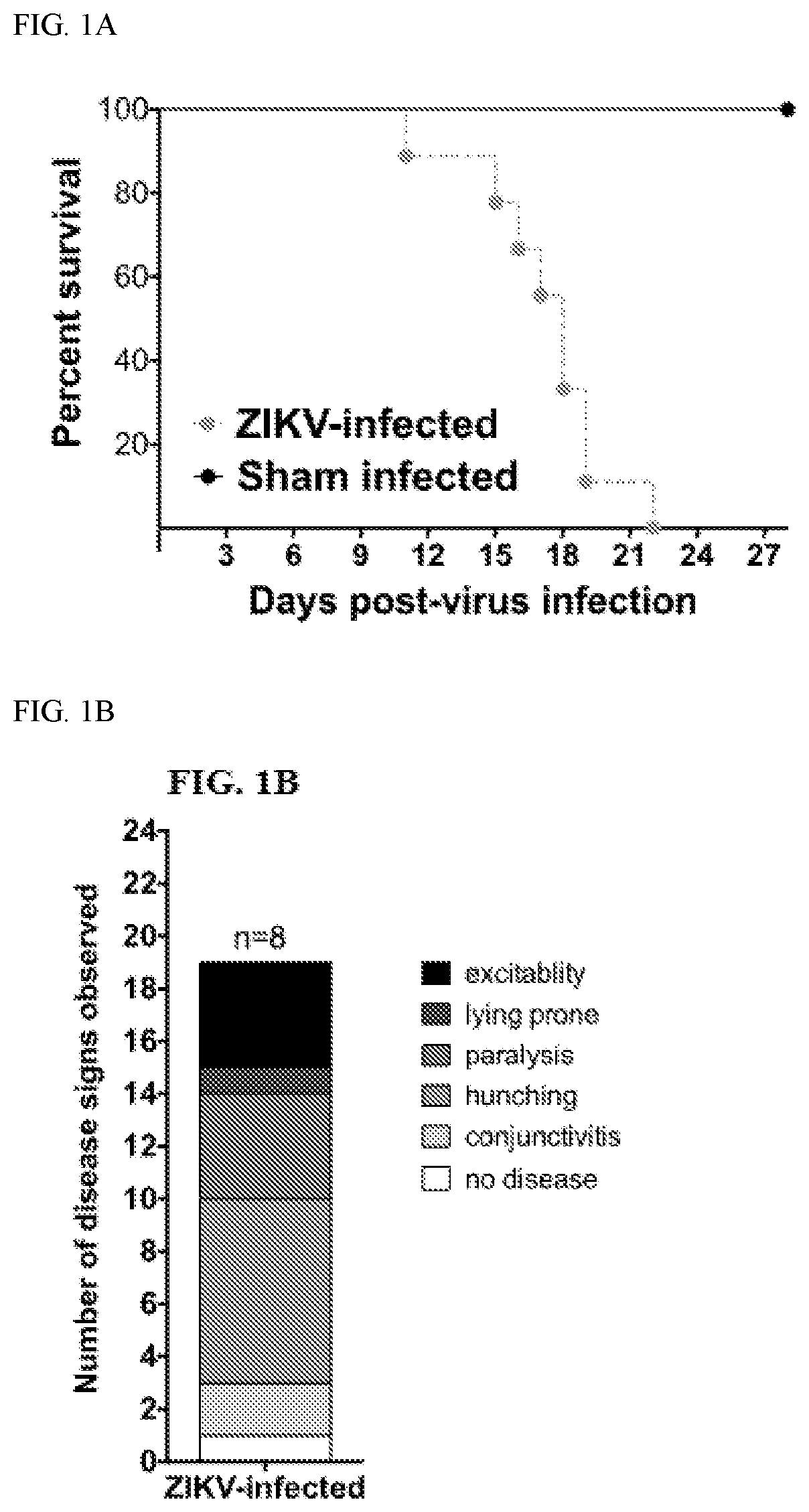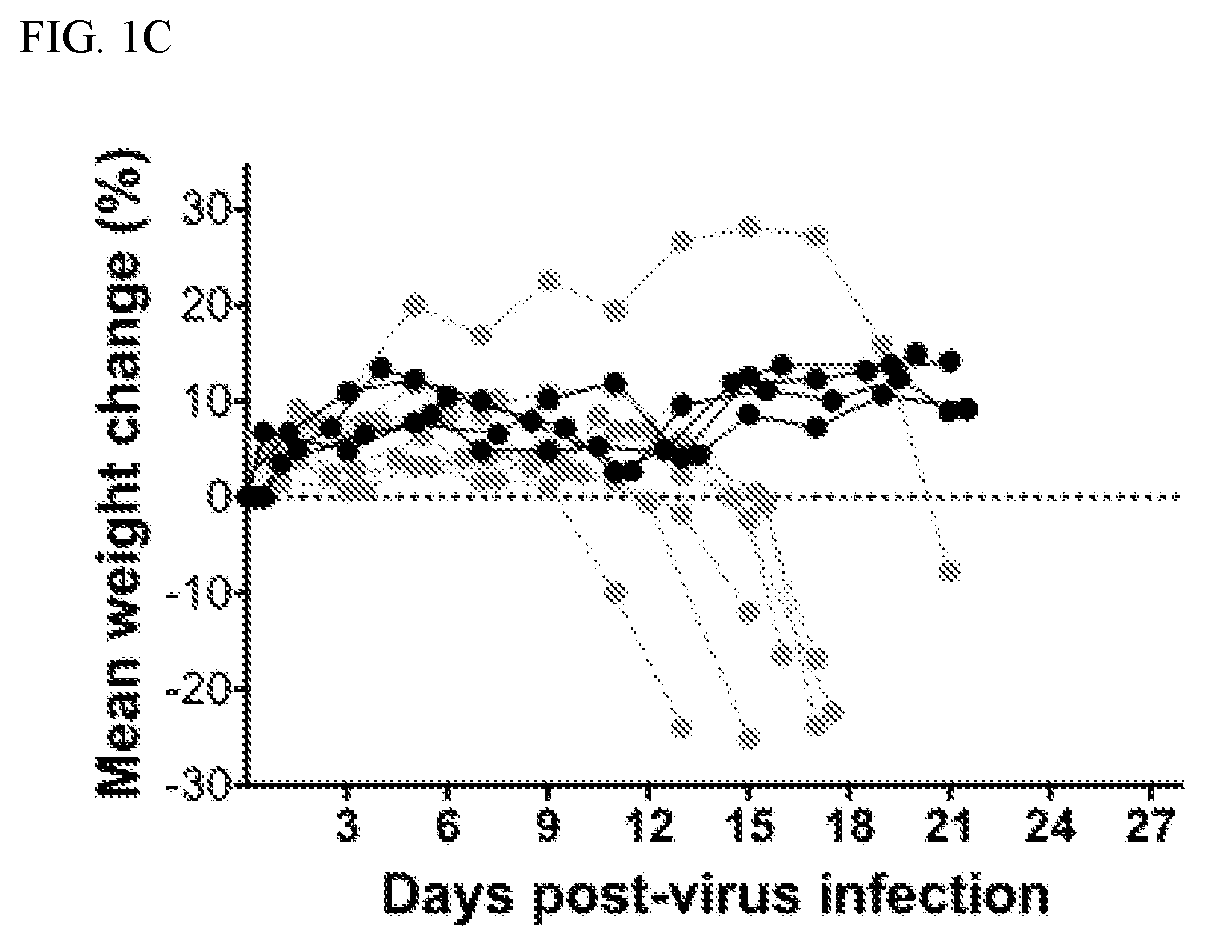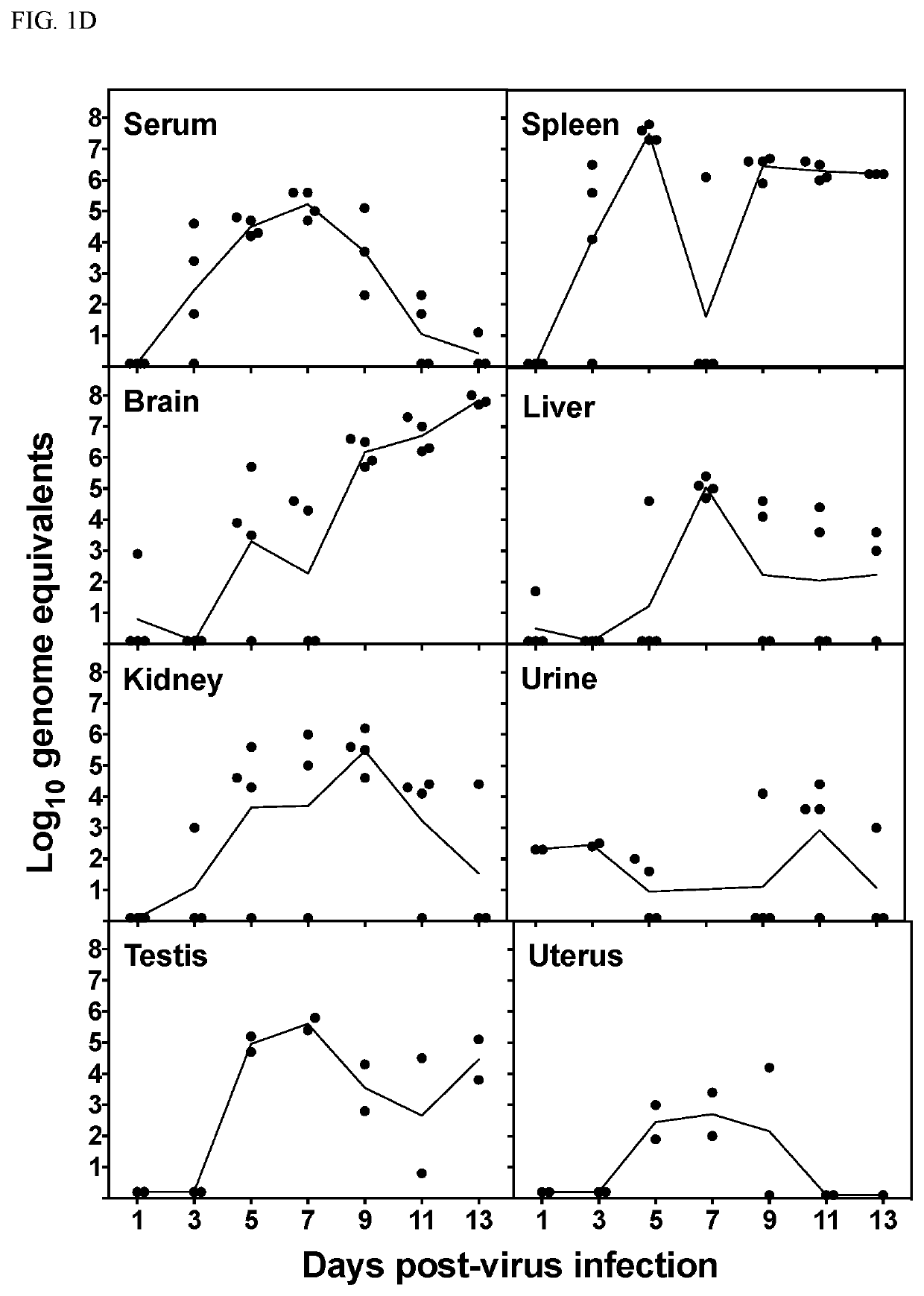Methods and compositions for treatment of zika virus infection
a zika virus and composition technology, applied in the field of zika virus treatment methods and compositions, can solve the problems of increasing the risk of human transmission, serious morbidity and/or mortality, etc., and achieve the effect of treating, suppressing and/or preventing zika virus infection, and preventing a disease or condition
- Summary
- Abstract
- Description
- Claims
- Application Information
AI Technical Summary
Benefits of technology
Problems solved by technology
Method used
Image
Examples
example 1
ization of Murine Zika Virus Mouse Model
[0169]The AG129 mouse model was used in this study and has been used previously in the study of viral polymerase inhibitors of Zika virus. AG129 mice lack both the α / β (type I) and γ (type II) interferon receptors. AG129 mice are susceptible to Zika virus infection and display relevant signs of disease, including conjunctivitis, neurologic involvement and disease, measurable viremia, hindlimb paralysis and mortality as well as hunching, lethargy and excitability at late stages of infection. Death as a result of Zika virus infection generally occurs between 8 and 20 to 30 days after virus challenge depending on the dose of the viral challenge.
[0170]Malaysian strain (P6-740) of Zika virus was titered in mice (data not shown) and a virus challenge dose of 103 pfu / mouse was identified as a suitable dose to cause 100% mortality in AG129 mice after subcutaneous injection (FIG. 1A). This challenge dose was used in subsequent experiments. Various dise...
example 2
Results
[0172]The agents used in this experiment were Compound A (the compound of formula I, where A is NH2 and B is H as the HCL salt) and ribavirin. The compounds were administered at a range of concentrations up to 100 μg / ml. Compounds were prepared in MEM just prior to testing. Inhibition of virus replication was determined by microscopic examination of the infected cells for cytopathic effect, increase of neutral red (NR) dye uptake (colorimetric determination), and virus yield reduction. Uninfected cells treated with a compound were assayed as above for cytotoxicity control. The EC50, EC90 and SI (selectivity index) values were determined in Vero76, Huh7 and RD cells as analyzed by the neutral red uptake dye assay and virus yield reduction assays. The results are presented from 3 or more independent experiments (standard deviations not shown. Three Zika virus strains were used in this in vitro study, Malaysia strain P 6-740, Uganda strain MR-766 and Puerto Rico strain PRVABC-59...
example 3
of Compound A and Ribavirin in the Murine Zika Virus Model
[0176]The agents used in this experiment were compound A (the compound of formula I, where A is NH2 and B is H as the HCL salt) and ribavirin. Compound A was administered IM at 150 mg / kg / day and 300 mg / kg / day, each in a volume of 0.05 ml saline and ribavirin was administered IP at 75 mg / kg / day and 50 mg / kg / day, each in a volume of 0.1 ml saline. IM or IP administration of the daily dose was accomplished in two IM / IP injections of one-half the daily dose each. Mice were administered the first dose of Compound A and ribavirin 4 hours prior to infection with Zika virus and continued the treatment for 8 days post-infection.
[0177]In this experiment, Zika virus (Malaysia, strain P 6-740) was administered at a challenge dose of 100 CCID50 (103 pfu) per mouse via subcutaneous injection in a 0.1 ml volume. The treatment groups are shown in Table 2 below.
[0178]
TABLE 2nGroupCompoundDoseScheduleVirus81Comp A300 mg / kg / d0.05 ml, IM, bid × ...
PUM
| Property | Measurement | Unit |
|---|---|---|
| diameter | aaaaa | aaaaa |
| diameter | aaaaa | aaaaa |
| weight | aaaaa | aaaaa |
Abstract
Description
Claims
Application Information
 Login to View More
Login to View More - R&D
- Intellectual Property
- Life Sciences
- Materials
- Tech Scout
- Unparalleled Data Quality
- Higher Quality Content
- 60% Fewer Hallucinations
Browse by: Latest US Patents, China's latest patents, Technical Efficacy Thesaurus, Application Domain, Technology Topic, Popular Technical Reports.
© 2025 PatSnap. All rights reserved.Legal|Privacy policy|Modern Slavery Act Transparency Statement|Sitemap|About US| Contact US: help@patsnap.com



